This article sheds light on some of the most influential Russian women whose contributions have left indelible marks on history. From ruling empresses to pioneering scientists and iconic artists, these women not only broke barriers in their respective fields but also paved the way for future generations. Their stories are not just tales of personal achievement but are also reflective of the broader societal changes they influenced.
Key Takeaways
- Understanding the power and impact of Russian women in various spheres of life.
- Recognizing the diverse fields in which Russian women have excelled and left a lasting legacy.
- Learning about the historical context and challenges these women faced.
- Gaining insights into the societal changes spurred by their achievements.
- Inspiring current and future generations by reflecting on these trailblazers’ lives and contributions.
Catherine the Great: Empress of All Russia

Rise to Power
Catherine’s journey to power is nothing short of a dramatic thriller. Married to the unpopular Peter III, she orchestrated a coup that toppled him from power in 1762, declaring herself the sole ruler of Russia. Her bold move not only secured her position but also marked the beginning of a new era in Russian history.
Reforms and Achievements
Catherine the Great was a visionary leader who transformed Russia into a modern state. She established the first state-funded school for girls and significantly reduced the power of the church in governance. Her reign was also marked by vast improvements in the arts, economy, and trade, showcasing her commitment to modernizing Russia.
Legacy and Impact
Catherine’s legacy is immense, influencing not just the political landscape but also the cultural and social frameworks of Russia. Her efforts to westernize and expand Russia have left a lasting impact, making her one of the most respected and formidable leaders in history.
Valentina Tereshkova: The First Woman in Space

Early Life and Career
Valentina Tereshkova’s journey to the stars began in a small village in Russia. From a young age, she was fascinated by the sky, but her path to becoming a cosmonaut was anything but straightforward. Before her historic flight, Tereshkova worked in a textile factory and was an avid skydiver, which played a crucial role in her selection for the space program.
Historic Space Flight
On June 16, 1963, Tereshkova made history by becoming the first woman to fly into space. Aboard Vostok 6, she orbited the Earth 48 times over three days, conducting various scientific experiments. This mission not only proved women’s capabilities in space but also set a new benchmark for human spaceflight.
Contributions to Science and Society
After her space mission, Tereshkova took on a new role as a prominent member of the Soviet government, influencing scientific and societal advancements. Her work helped pave the way for future generations of women in science and technology, making her a true pioneer in both fields.
Anna Pavlova: Prima Ballerina Who Captivated the World

Early Years and Training
Anna Pavlova, a name synonymous with grace and perfection in ballet, began her journey at the tender age of ten. She was admitted to the Imperial School of Ballet at the Mariinsky Theatre, a prestigious institution that shaped her into the iconic figure she became. Her dedication and innate talent were evident as she swiftly moved through the ranks, achieving the status of prima ballerina by 1906.
Iconic Performances
Pavlova’s performances were nothing short of magical, captivating audiences around the globe. Her most famous piece, The Dying Swan, which she performed over 4,000 times, remains a poignant symbol of ballet’s beauty and fragility. This solo, choreographed by Michel Fokine, was inspired by swans that Pavlova saw in public parks and beautifully showcased her ability to convey deep emotion and exquisite technique.
Influence on Modern Ballet
Pavlova’s impact on ballet is immeasurable. She not only inspired generations of dancers but also brought ballet to a wider audience. Her tours across continents were pioneering at the time and helped popularize ballet in places it had never been seen before. Her legacy lives on, not just in the performances and dancers she inspired, but in the many people who continue to be moved by ballet today.
Sophia Kovalevskaya: A Pioneer in Mathematics

Breaking Barriers in Education
Sophia Kovalevskaya wasn’t just a mathematician; she was a trailblazer who shattered the glass ceilings of her time. Born in Moscow in 1850, she faced immense hurdles due to gender biases in academia. Yet, her passion and intellect could not be confined. She went on to become the first woman in Northern Europe to earn a doctorate in mathematics, setting a precedent for future generations. Her journey is a testament to the power of resilience and determination in overcoming societal obstacles.
Key Contributions and Theorems
Kovalevskaya’s work in mathematics was nothing short of revolutionary. Her most significant contributions include the Kovalevskaya Top, a special case of the spinning top, which is a classic example in the dynamics of a rigid body. Her insights into partial differential equations and Abelian integrals were groundbreaking and have had a lasting impact on the field. These contributions not only advanced mathematics but also paved the way for further scientific explorations by women in a male-dominated field.
Legacy in Academic Circles
The legacy of Sophia Kovalevskaya extends far beyond her mathematical theorems. She inspired a wave of women to pursue careers in science and mathematics, proving that intellectual prowess knows no gender. Her life and work continue to be celebrated in academic circles, with numerous awards and recognitions named in her honor. Kovalevskaya remains a symbol of perseverance and brilliance, her story a beacon for those who dare to dream big and break barriers.
Maria Bochkareva: A Warrior on the Front Lines

From Peasant to Soldier
Maria Bochkareva’s journey from a peasant to a celebrated soldier is a tale of sheer determination and bravery. Born into poverty, she defied societal norms by enlisting in the army during World War I, a time when women were hardly seen on the battlefields.
Leadership in the Women’s Battalion
Bochkareva was instrumental in forming the Women’s Battalion of Death, an all-female combat unit. Under her leadership, these women proved their mettle in several intense battles, challenging the prevailing doubts about women’s capabilities in combat.
Impact on Women in Military
Her pioneering role not only paved the way for women in the military but also inspired countless others across the globe. Her legacy continues to influence the integration of women into military forces worldwide, making her a true icon of resilience and courage.
Marina Tsvetaeva: A Poetic Genius

Life and Times
Marina Tsvetaeva’s life was as tumultuous as it was inspiring. Born in Moscow in 1892, she navigated through the upheavals of the Russian Revolution and the turmoil that followed. Her personal life was marked by tragedy and complexity, including her emigration and the loss of her daughter. Despite these challenges, Tsvetaeva’s voice never wavered, and her writings continued to touch the hearts of many.
Major Works and Themes
Tsvetaeva’s poetry is renowned for its intense emotionality and lyrical beauty. Her major works, such as The Poem of the End and The Poem of the Mountain, delve into themes of love, isolation, and the struggle of the human spirit. Her style is marked by a unique blend of symbolism and acuteness, making her a significant figure in Russian literature.
Enduring Influence on Russian Literature
Tsvetaeva’s influence on Russian literature is profound and enduring. Her innovative techniques and bold thematic choices have inspired generations of writers and poets. Her ability to convey deep emotional truths through her work ensures that her legacy continues to resonate within the literary community and beyond.
Vera Mukhina: Sculpting the Soviet Spirit

Artistic Beginnings
Vera Mukhina’s journey into the world of art began at the Moscow Institute of Painting, Sculpture, and Architecture. Under the guidance of Pavel Trubetskoi, she honed her skills and embraced the World of Art movement. By 1903, her talent was recognized with a silver medal, marking the start of her illustrious career.
Famous Works Including ‘Worker and Kolkhoz Woman’
Mukhina’s most iconic sculpture, ‘Worker and Kolkhoz Woman’, became a symbol of Soviet might and artistic innovation. This monumental piece, showcased at the 1937 World’s Fair in Paris, not only exemplified Soviet art but also projected the USSR’s ambitions on the global stage.
Legacy in Soviet and Russian Art
Mukhina’s influence extends beyond her lifetime, shaping the aesthetic and ideological framework of Soviet and Russian art. Her works continue to inspire artists and are studied for their bold, socialistic style and historical relevance.
Ludmila Pavlichenko: The Unyielding Sniper

Early Life
Ludmila Pavlichenko’s journey from a young girl in Ukraine to a feared sniper in World War II is a tale of sheer determination and grit. Born in 1916, she moved to Kiev with her family at a young age where she became involved in shooting as a hobby. Her skills quickly turned from pastime to passion, setting the stage for her future as a legendary sniper.
Record-Breaking Achievements
Ludmila’s prowess with a rifle was unmatched. She is credited with 309 confirmed kills, making her one of the most successful female snipers in history. Her record includes 36 enemy sniper kills, which played a crucial role in the defense of Sevastopol during the grueling siege of 1941-1942. Her achievements are not just numbers but a testament to her sharpshooting skills and strategic acumen.
Post-War Contributions
After the war, Ludmila didn’t fade into the background. Instead, she turned her focus to education, becoming a historian and sharing her experiences. She worked tirelessly to ensure that the sacrifices of wartime were not forgotten, speaking at various events and advocating for the recognition of female veterans. Her legacy continues to inspire not only military personnel but all those who fight against the odds for their beliefs.
Elizaveta Glinka: Doctor Liza, the Angel of Mercy

Humanitarian Missions
Elizaveta Glinka, affectionately known as Doctor Liza, dedicated her life to humanitarian missions across the globe. Her selfless acts of kindness and medical expertise brought relief to the most vulnerable, from war-torn regions to disaster-stricken areas. Her work often involved dangerous trips to deliver medical supplies and aid, showcasing her unwavering commitment to helping others.
Legacy in Medical and Human Rights
Doctor Liza’s legacy is profound, influencing both the medical and human rights fields. Her initiatives paved the way for better healthcare in underserved communities and raised awareness about critical human rights issues. Her approach combined compassion with action, inspiring countless others to join and support humanitarian causes.
Tragic End and Lasting Memories
The tragic end of Elizaveta Glinka in a plane crash over the Black Sea was a devastating blow to all who knew her and benefited from her work. However, her memory lives on, fueling ongoing efforts in humanitarian aid and serving as a beacon of hope and resilience. Her life’s work continues to inspire new generations to carry on the torch of mercy and compassion in the face of adversity.
Nadezhda Krupskaya: Revolutionary and Educator

Early Involvement in Politics
Nadezhda Krupskaya was born into a family with a liberal political stance in St. Petersburg, where she began her revolutionary career. Her early involvement in politics was marked by her deep commitment to Marxist ideologies, which she embraced alongside her future husband, Vladimir Lenin. Together, they were instrumental in shaping the Bolshevik faction of the Russian Social Democratic Labour Party.
Educational Reforms
Krupskaya was not only a revolutionary but also a passionate educator. She believed in the power of education to transform society and was deeply involved in the educational reforms post-revolution. Her work focused on making education accessible to all, ensuring it was comprehensive and catered to the needs of the working class. She authored several books on education and pedagogy, aiming to enlighten and empower through learning.
Life with Lenin
Living with Lenin, Krupskaya was more than just a spouse; she was a partner in both his personal and political life. Their relationship was built on mutual respect and shared revolutionary zeal. She played a critical role in managing his writings and communications, often acting as an intermediary between Lenin and his comrades. Her unwavering support and intellectual contributions were vital during the tumultuous years leading up to and following the Bolshevik Revolution.
Lyudmila Pavlichenko: The Unyielding Sniper

Early Life
Lyudmila Pavlichenko’s journey from a young Ukrainian student to a legendary sniper began in the early 1930s. Her passion for shooting was evident from her participation in a shooting club before she even finished her education. This early exposure to marksmanship laid the foundation for her future feats.
Record-Breaking Achievements
Lyudmila Pavlichenko is a name that resonates with extraordinary sharpshooting skills. With a staggering 309 confirmed kills, she earned the nickname ‘Lady Death,’ making her one of the most feared snipers in history. Her precision and skill in eliminating enemy targets during WWII helped shift the tides in favor of the Soviet forces.
Post-War Contributions
After the war, Pavlichenko didn’t just fade into the background. She turned her focus to education, becoming a historian. Her efforts to share her experiences and advocate for peace underscored her commitment to affecting positive change even beyond the battlefield.
Lyudmila’s story is not just about her wartime achievements but also her peacetime contributions to society and her enduring legacy as a symbol of courage and resilience.
Tatiana Romanova: From Fiction to Cultural Icon

Creation and Character Analysis
Tatiana Romanova, a fictional character from the James Bond series, is not just a figure in a story but a symbol of charm and mystery that has captivated audiences worldwide. Her character, often seen as a blend of vulnerability and strength, provides a deep well for analysis on gender roles and espionage stereotypes during the Cold War era.
Impact on Film and Media
Tatiana’s influence extends beyond the pages of novels into films and media, where she has been portrayed as both a damsel in distress and a competent agent. This dual representation has sparked discussions on the portrayal of women in media, particularly in genres traditionally dominated by male characters.
Legacy in Pop Culture
Tatiana Romanova’s legacy in pop culture is undeniable. From Halloween costumes to analytical essays, her character has been a source of inspiration and debate. Her lasting impact is a testament to the character’s design and the broader appeal of the James Bond franchise in shaping modern views of femininity and heroism.
Explore the fascinating journey of Tatiana Romanova from a mere fictional character to a cultural icon in our latest article. Dive into the depths of her influence in literature and popular culture, and discover how she continues to inspire generations. For a deeper insight, visit our website and read the full story.
Wrapping It Up
As we close the chapter on this enlightening journey through the lives of some of Russia’s most iconic women, it’s clear that their legacies are not just footnotes in history books but vibrant blueprints for courage, innovation, and leadership. These trailblazers have not only shaped the course of history but continue to inspire generations to break barriers and redefine possibilities. So, here’s to the power of enduring spirits and the endless potential of following in the footsteps of greatness.
Frequently Asked Questions
Who was Catherine the Great?
Catherine the Great was the Empress of All Russia from 1762 until her death in 1796. She is known for her extensive internal reforms and expansion of Russian territories.
What is Valentina Tereshkova famous for?
Valentina Tereshkova is famous for being the first woman to have flown in space. She orbited the Earth 48 times in 1963 aboard Vostok 6.
How did Anna Pavlova influence ballet?
Anna Pavlova was a renowned Russian prima ballerina known for her unique techniques and creating the iconic role of The Dying Swan, which influenced modern ballet.
What are some key contributions of Sophia Kovalevskaya in mathematics?
Sophia Kovalevskaya made significant contributions to analysis, partial differential equations, and mechanics. She was the first woman to earn a doctorate in mathematics.
What was Maria Bochkareva known for during World War I?
Maria Bochkareva was known for founding and leading the Women’s Battalion of Death, which was an all-female combat unit during World War I.
What are some major works of Marina Tsvetaeva?
Marina Tsvetaeva was one of the most significant Russian poets of the 20th century. Her major works include collections like ‘The Magic Lantern’ and ‘Mileposts’.
What impact did Vera Mukhina have on Soviet art?
Vera Mukhina was highly influential in Soviet art, known for her monumental sculptures including the famous ‘Worker and Kolkhoz Woman’ which became a symbol of Soviet ideology.
What records did Ludmila Pavlichenko set during World War II?
Ludmila Pavlichenko is recognized as the most successful female sniper in history, credited with 309 kills during World War II.



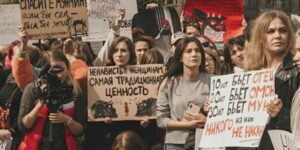


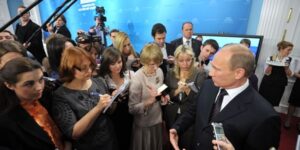




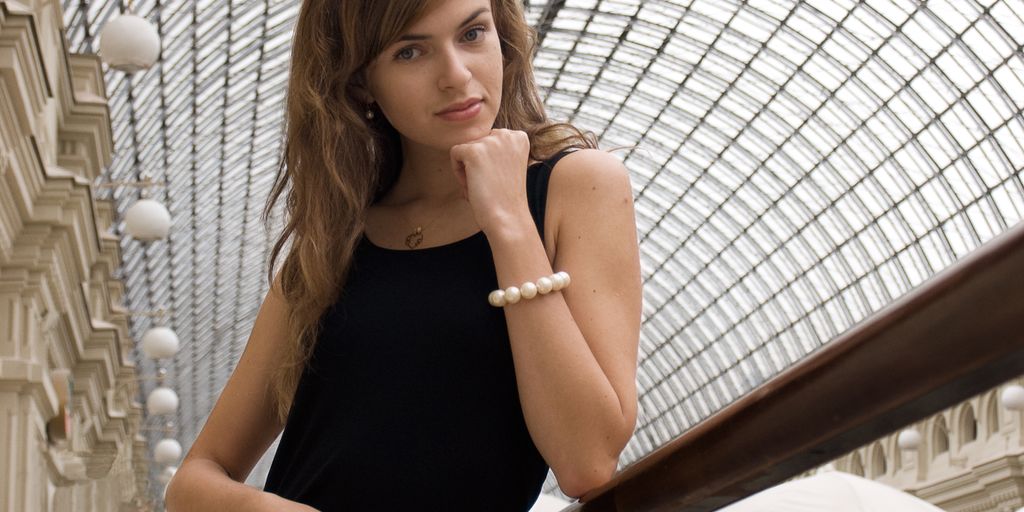
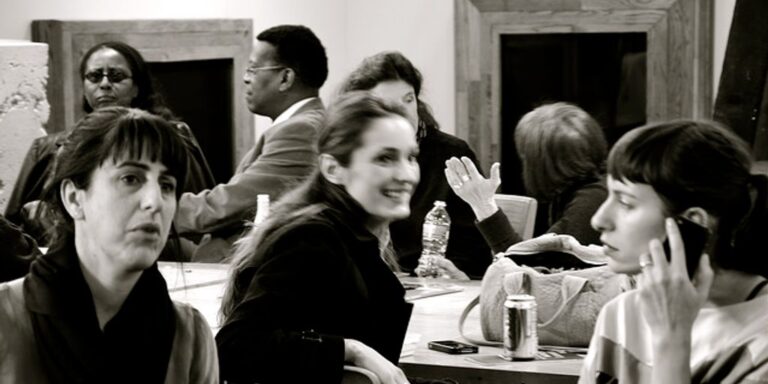
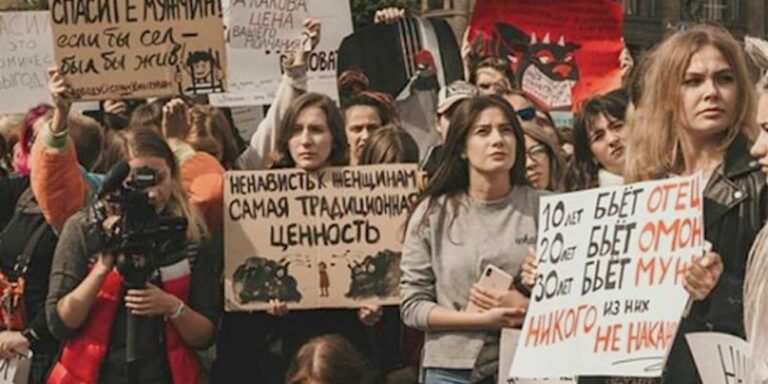

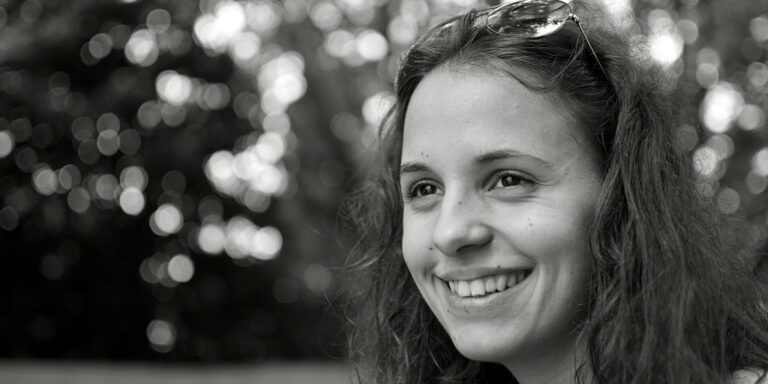
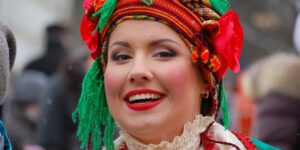



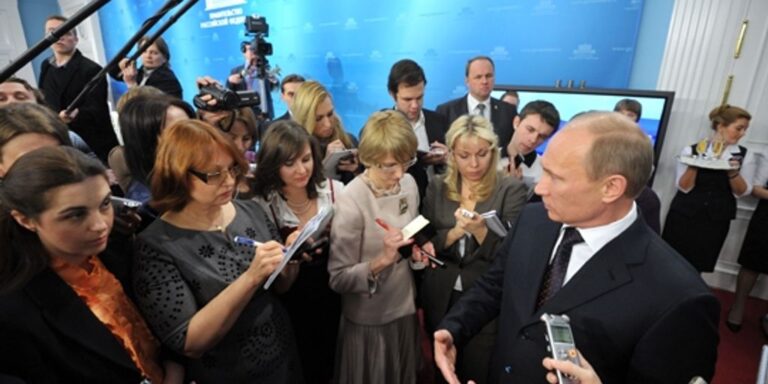
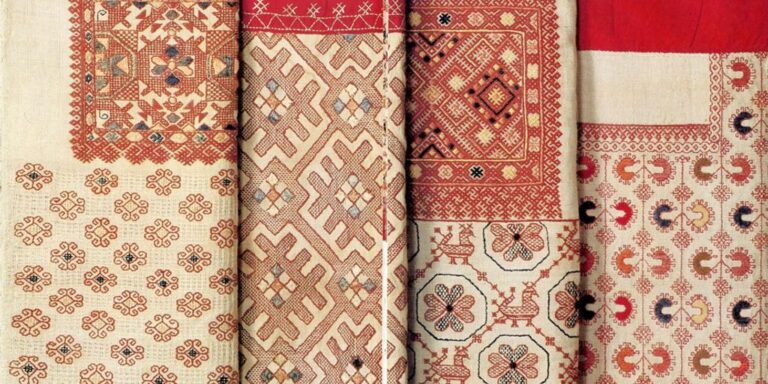
+ There are no comments
Add yours